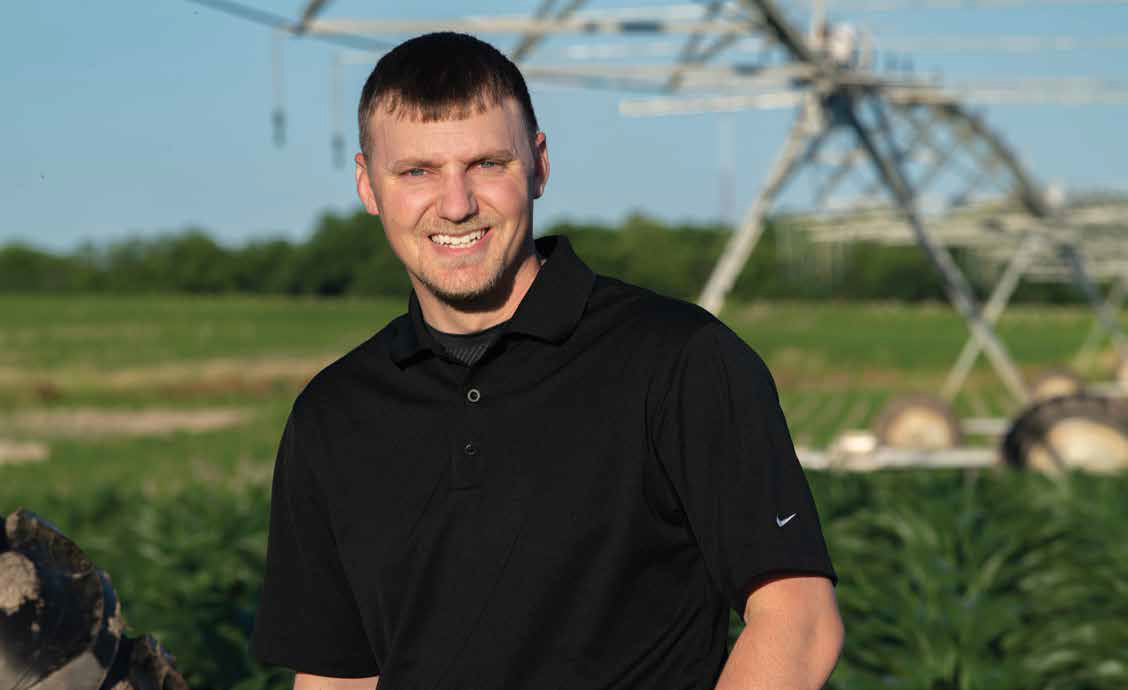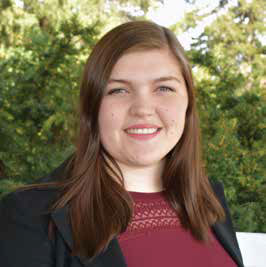
Tapping into Nebraska’s Crop Production
TAPS Program Builds Relationships Between Growers and Extension Educators

The University of Nebraska–Lincoln created the Testing Ag Performance Solutions program, also known as TAPS. The program gives growers across Nebraska and the Midwest opportunities to participate in sorghum and corn competitions designed to assist growers in experimenting with different management practices without using their own land, crops or investing in expensive equipment.
Daran Rudnick, assistant professor and irrigation management specialist in the Department of Biological Systems Engineering, is one of the founding members of TAPS, along with Chuck Burr, Nebraska Extension educator, and Matt Stockton, associate professor and agricultural economist. Rudnick, Burr and Stockton are stationed in North Platte, Nebraska, at the university’s West Central Research and Extension Center (WCREC) where the TAPS field competitions are hosted.
“Really, we are coming up with a way to build that network of people in crop production. It’s not just about growers, but the industry, financial institutions and consultants. We want to provide a platform where people can learn together,” Rudnick said.
The TAPS program seeks to expand on the traditional model of Extension education by facilitating interactive, real-life farm management competitions in a low-risk environment. According to Rudnick, the TAPS program is unique to Nebraska and leverages Nebraska’s Extension programming by fostering relationships between all stakeholders in crop production.
TAPS Competitions
The primary objective of TAPS is to actively engage growers across Nebraska in Extension research, Rudnick explained. To meet the needs of each individual grower, Rudnick and his colleagues decided to host competitions at WCREC that allow a large number of growers to compete with the same field conditions.
“It’s difficult to comparatively assess differences in management practices and their outcomes across 50 producers due to differences in where people are located. So, we bring everybody to one location. That way, everybody has the same soil, the same climate and the same equipment. This way, we can truly evaluate the decisions that are being made and the outcomes of those decisions,” Rudnick said.
Once the competitions commence each March, growers make all decisions regarding irrigation and nutrient management, seed selection, insurance and marketing by logging into the profile set up for them on the TAPS website, https://taps.unl.edu. Growers can form teams for each sorghum and corn competition. Each team is assigned a set of plots on the experimental field for the entirety of the competition season, which lasts until December.
“Teams submit forms to the TAPS team as they make production decisions, including what hybrid they want, the seeding rate, the nitrogen application and irrigation amount and timing. We then put those decisions into play in the field,” Rudnick said.
Photos of each plot are made available for teams to have a better understanding of the condition of the test field. Information regarding the crop growth stage, past weather data and soil conditions is also regularly uploaded to the TAPS website throughout the competition.
While specific plot information is only released to the correlating team, the public can keep up with the progress of the competition through newsletters and general information about the test field on the TAPS website, Rudnick explained.
Ensuring the program mimics real-life farm decision-making is particularly important to the participants (i.e., growers, industry reps, etc.) and the TAPS team.
“We simulate a 3,000-acre corn farm and a 1,000 acre sorghum farm for the competitions. Basically, if they had 200 bushels of corn per acre on our field, we would say that is 200 bushels per acre across 3,000 acres. This way, there is the reality of actually putting decisions into play on the field as well as the simulation of upscaling it to the farm business,” Rudnick said.
Rudnick said partnerships with agribusinesses have allowed TAPS to diversify the technology and competitions offered to participants. For example, a partnership with Eco-Drip Irrigation Solutions of Hastings, Nebraska, prompted the addition of a corn subsurface drip irrigation competition for the 2019 season. Eco-Drip Irrigation Solutions donated, designed and installed a subsurface drip irrigation system at WCREC for use in the corn competition.
At the end of the competition season, all participants gather for the annual banquet to recognize winners of each category. The winners are asked to speak at workshops and field days throughout the next year of competitions.
Through building the relationships between Extension educators and growers, the TAPS program provides an opportunity for each group to share experiences and knowledge in an interactive environment.
Nebraska’s Advantage
Rudnick said the extensive network and visionary leadership within Nebraska Extension as well as grower groups and associations such as the Nebraska Water Balance Alliance (NEWBA), Corn Board, Sorghum Board, among others are what allows Nebraska to provide opportunities like TAPS to growers.
“Nebraska is well suited for TAPS because of how strong our Extension program is statewide. We also have university leaders and administration that see value in a program like this, which helped provide the opportunities to pull it off,” Rudnick said.
While Nebraska Extension was the driving force behind creating the TAPS program, Rudnick said other states, including Missouri, Colorado, Kansas and Oklahoma, have growers and Extension specialists represented throughout TAPS competitions
By fostering relationships between all stakeholders in crop production, the TAPS program connects industry knowledge and Extension research to personal experiences of growers. Further, Rudnick said the TAPS program has even brought groups of growers from the same area of Nebraska closer together through interactions at field days and the annual banquet.
For example, a group of seven producers from Perkins County, Nebraska, has congregated at the same coffee shop for several years. Upon learning of the TAPS program, the seven growers formed a team and began competing.
“Producers from Perkins County said that the most valuable part of TAPS was not the outcome of the competitions, but that it provided them an opportunity to have conversations about more complex and sensitive topics, including marketing strategies and different philosophies on management practices,” Rudnick said.
By leveraging the expertise of growers and Extension, the TAPS program offers a unique platform to build greater community within the crop production industry while allowing growers a low-risk environment to find the most efficient management practices.